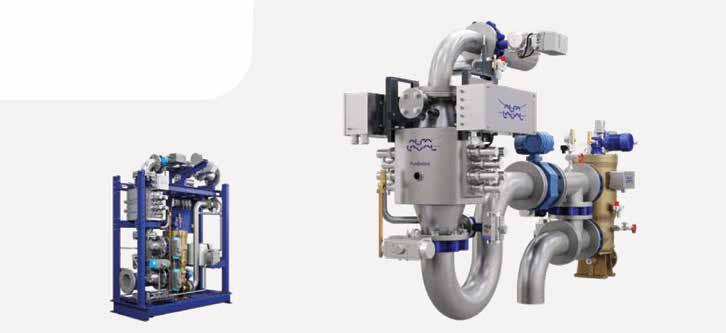Financial Focus
Why do publicly quoted shipping companies increase or reduce their share capital? By Ted Petropoulos, Head, Petrofin Research© Many of you may have invested in public shipping companies and / or are interested to follow their development, as a matter of interest. Although, the opportunities for new initial public offerings (IPOs) are still limited, there has recently been a spate of public companies that either offer new shares to their shareholders to raise capital or proceed via secondary offerings to brokers, who in turn acquire and dispose such shares in due course, usually at a discount to the prevailing share price. Admittedly, one of the main benefits of being a shipping public company is to be able to raise capital in order to buy assets e.g. ships, using shares as opposed to cash. The same could apply if another shipping company is bought via shares. The above is best achieved when the share price of the offeror is above the Net Asset Value per share (NAV) and at the same time, the proceeds are used to boost the company’s income stream. Whether the earnings per share (EPS) of each share (old and new) shall rise will depend on the contribution of the new vessel, as a percentage to the total fleet, prior to and after the new share issue. The same would apply if a shipping company was to be bought (provided sellers accept whole or part payment in shares), as to whether the resultant NAV and EPS are diluted or not. In shipping, however, all public companies have share prices at a discount to NAV. For pure shipping public companies (not engaged in other activities or services other than those of running their fleet), the discount arises because such companies tend to have higher administrative and reporting costs as well as disclosure issues and other complications. Furthermore, the share price is also influenced by the volatility and prospects of the shipping market. Often, such a discount is substantial. Under such circumstances, by definition, an increase of the company’s share capital will be dilutive for existing shareholders. As such, the value of each share, the ownership of the company they represent and their voting power may diminish in time. This applies even more in case shareholders do not take up their rights or such shares are “placed” with brokers at a deep discount to the share price and NAV. So the question arises, why do public companies issue new shares at a discount to the share price which is itself at a discount to NAV, if this results in a dilution of their shareholders’ NAV and a fall in the share price? Such practice may, on the surface of it, be contrary to
12 NAFS | September 2020
the company’s and their shareholders’ interests. Further questions may arise if the share issue is underwritten by the major shareholder and the major shareholder ends up having acquired most or all of the newly placed shares at a discount, boosting their ownership of the company. In this article, we will seek to present some simple explanations and observations (without delving into capital structure theory) that apply for shipping and which, readers may find useful in their selection or assessment of shipping public companies and their management policies and practices. As potential shareholders, such investors might wish to take into account how public companies treat their shareholders. We should add that in addition to the NAV and EPS considerations, the value of a share may also reflect its earnings’ expectations, dividends policy, quality and reputation of its management, its ability to have well timed investments taking advantage of shipping cycles, as well as its capital and debt structure and resiliency of earnings, via long term charters. However, in shipping the NAV factor remains the most important one, as over time a successful company should see its NAV rise through sound management, investment as well as financial and share capital policy . Share capital and debt decisions, which are not dilutive, might involve the company buying part of its own issued share capital, if the discount of share price to NAV is substantial. In this way, the remaining shares should have a higher NAV and EPS. The above can be done if the company believes that investment opportunities are limited at a particular time and the cash to be used to purchase stock (Treasury stock) represents surplus cash. Another way to improve EPS, and consequently NAV, is to buy back issued bonds or repay expensive borrowing, which carry a high cost to the company, often in excess of 10% or even more. By reducing its debt servicing costs, EPS rises. Diana Shipping represents a good example of a public company that has used effectively both the above methods, to the benefit of its shareholders. Another justifiable reason for a share issue may lie in management’s belief that vessel prices represent an attractive investment opportunity. In such case, the purpose of the new share issue is to expand the future NAV and EPS of the company, should the decision turn out to be correct. Investors should be aware that,






